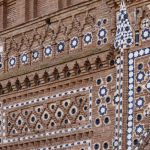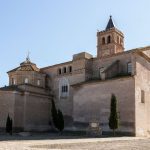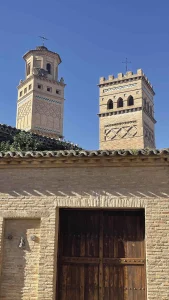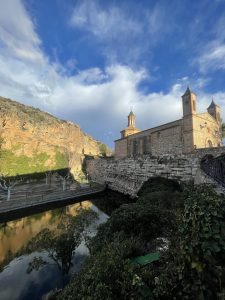
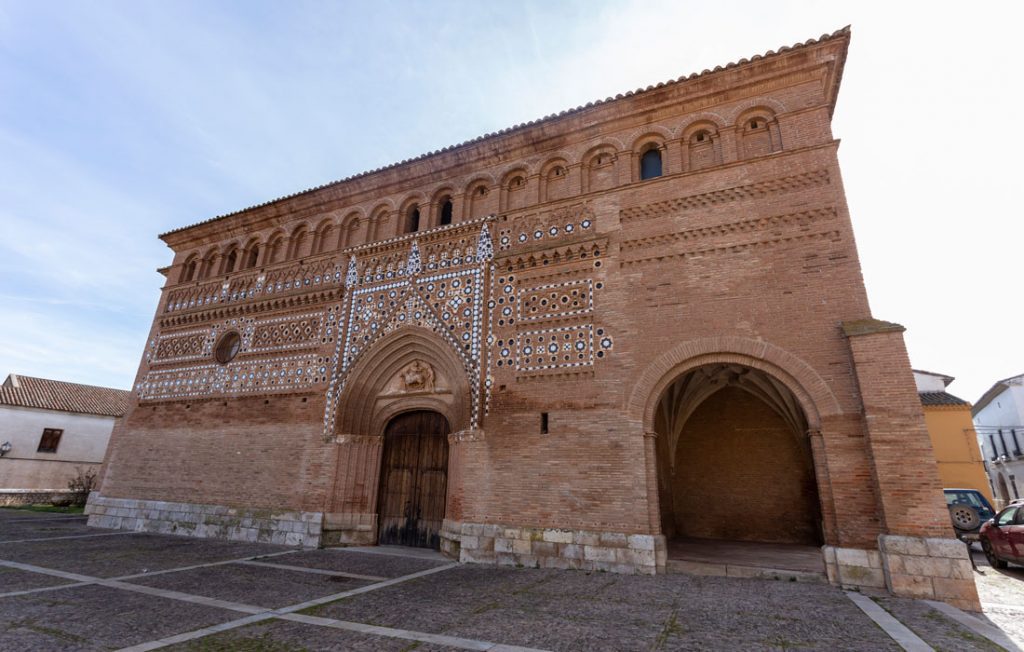
Monuments
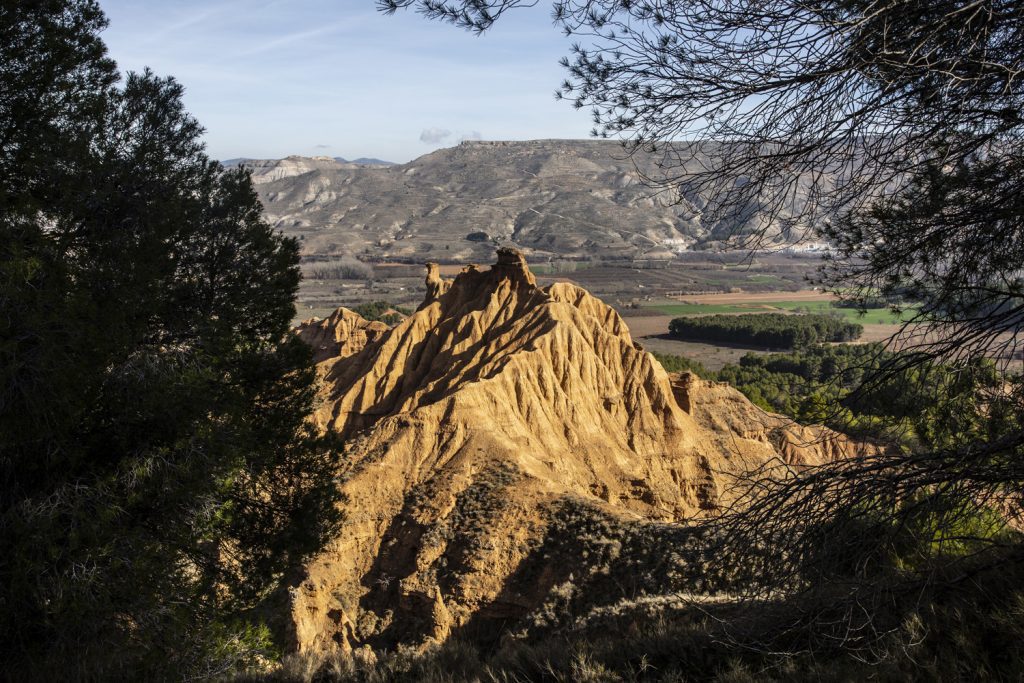

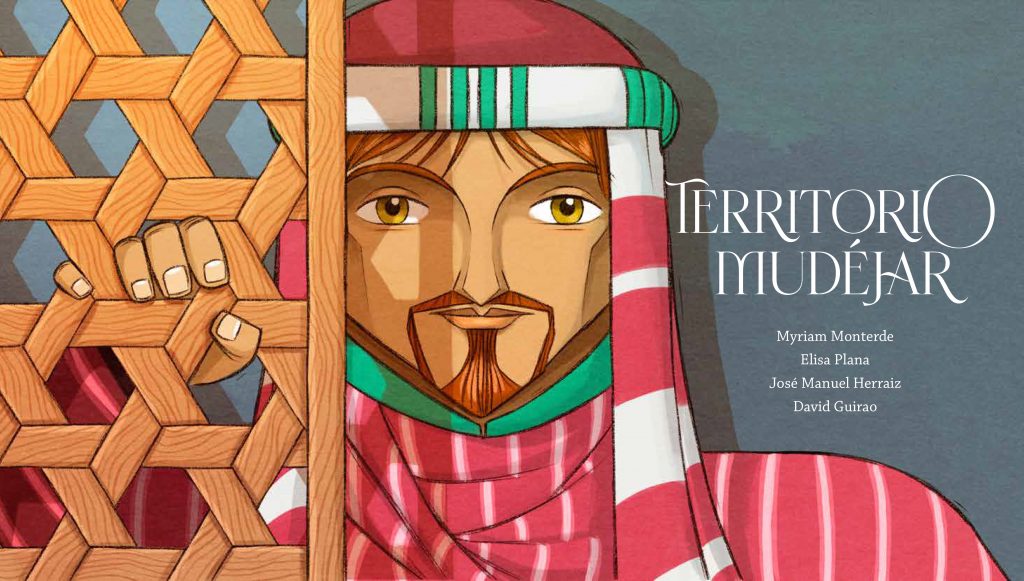
Didactic Mudejar, the guide

Circular from the rural school
Family walks

El mudéjar y la geometría euclidiana

The banks of the Jiloca River
Morata de Jiloca welcomes the visitor on the left bank of the river that gives it its name with the remains of what was once a castle of Muslim origin and with the dazzling flickering of the sun’s rays reflected on the ceramics of the north façade of the church of San Martín de Tours, an essential part of Aragonese Mudejar architecture.
Typologically, this church belongs to the group of fortress-churches, with a single nave and chapels between buttresses, and is characterised by the rationality of its structure and its solid, simple elements.
Its Mudejar construction dates from the first decade of the 15th century; the history of the building underwent a reorientation at the end of the 16th century with the construction of a new chancel and the original chancel remaining as a choir at the foot of the church.
Morata de Jiloca welcomes the visitor on the left bank of the river that gives it its name with the remains of what was once a castle of Muslim origin and with the dazzling flickering of the sun’s rays reflected on the ceramics of the north façade of the church of San Martín de Tours, an essential part of Aragonese Mudejar architecture.
Typologically, this church belongs to the group of fortress-churches, with a single nave and chapels between buttresses, and is characterised by the rationality of its structure and its solid, simple elements.
Its Mudejar construction dates from the first decade of the 15th century; the history of the building underwent a reorientation at the end of the 16th century with the construction of a new chancel and the original chancel remaining as a choir at the foot of the church.
The church of San Martín de Tours
At first glance it can be seen that the church of San Martín de Tours has a wider nave and lower elevation than the Mudejar churches of this type in Aragon, but its main distinguishing feature is the large tapestry that one of its façades has become.
Decorated with highlighted brick and polychrome ceramics in white and blue, it is striking for the large number of ornamental patterns used: multi-armed crosses forming lozenges, bands of corners and uncrossed mixtilinear arches alternate with discs and tiles forming eight-pointed stars and cylinders.
The facade also stands out, following Gothic patterns but masterfully interpreted in the language of the Mudejar tradition.
All this makes the hard years of the border war seem to be forgotten to give way to a visual spectacle as in the parish church of San Miguel de la Seo in Zaragoza, the gable of the Virgin of Tobed or the disappeared church of San Pedro Martir in Calatayud.
Inside, the church of San Martín houses the altarpiece of the Descent from the Cross, made in the second half of the 15th century, a magnificent example of panel painting.
The heritage of Morata de Jiloca cannot be understood without its landscape, which is surprising for its gullies, a capricious modelling of nature. A pleasant walk along a path leads to a viewpoint where you can contemplate this phenomenon caused by the action of rain and wind on the gypsum soil in which the river Jiloca has carved its valley.
At first glance it can be seen that the church of San Martín de Tours has a wider nave and lower elevation than the Mudejar churches of this type in Aragon, but its main distinguishing feature is the large tapestry that one of its façades has become.
Decorated with highlighted brick and polychrome ceramics in white and blue, it is striking for the large number of ornamental patterns used: multi-armed crosses forming lozenges, bands of corners and uncrossed mixtilinear arches alternate with discs and tiles forming eight-pointed stars and cylinders.
The facade also stands out, following Gothic patterns but masterfully interpreted in the language of the Mudejar tradition.
All this makes the hard years of the border war seem to be forgotten to give way to a visual spectacle as in the parish church of San Miguel de la Seo in Zaragoza, the gable of the Virgin of Tobed or the disappeared church of San Pedro Martir in Calatayud.
Inside, the church of San Martín houses the altarpiece of the Descent from the Cross, made in the second half of the 15th century, a magnificent example of panel painting.
The heritage of Morata de Jiloca cannot be understood without its landscape, which is surprising for its gullies, a capricious modelling of nature. A pleasant walk along a path leads to a viewpoint where you can contemplate this phenomenon caused by the action of rain and wind on the gypsum soil in which the river Jiloca has carved its valley.
Information
Town hall
www.moratadejilocaturismo.es
Association for the Integral Development of the Region of Calatayud and the Region of Aranda
galcar.es
VISIT MORATA DE JILOCA
976 633 296
DO YOU WANT TO KNOW MORE?
Aragon Tourism
turismodearagon.com
Tourism Calatayud Region
comarcacalatayud.com
Centre for Bilbilitan Studies
cebilbilitanos.com
Territorio Mudéjar Network
The city council has been a founding member of Territorio Mudéjar since march 2019.
Projects Territorio Mudéjar in Morata de Jiloca
Monuments | View the project
Pedagogy | View the project
Mudetrad Project | View the project
Mudejar and Euclidean Geometry | View the project
Didactic Mudejar, the guide | View the project
‘Circular’ Family walks | View the project
The wall as dermis. Light in the Mudéjar | View the project
Mudéjar RGB | View the project
Assessment of the muslim-friendly potential of Territorio Mudéjar | View the project

